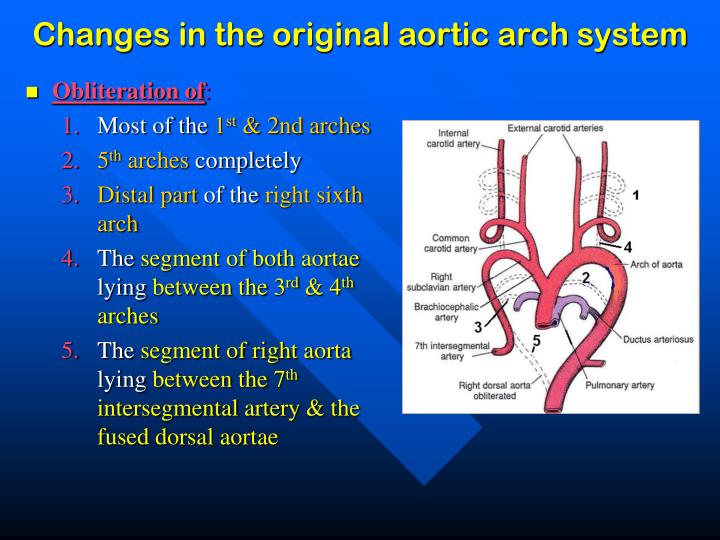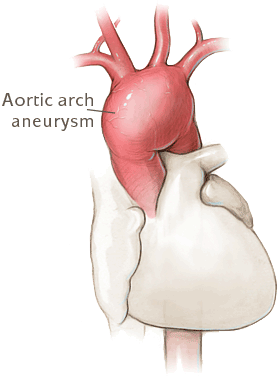
Though an Indo-European verb base *h 2u̯er- can be reconstructed from the Greek evidence, there appear to be no definitely comparable forms outside Greek. Overview What is interrupted aortic arch (IAA) Interrupted aortic arch (IAA) is a rare condition in which your baby’s aorta the large blood vessel coming from their heart that carries blood to the rest of their body is incomplete or interrupted. Whether or not these should be regarded as two verbs of distinct origin or as semantic branches of the same verb is unclear. Note that the verb aeírein displays two sets of meanings, that of harnessing and attachment (outside of nominal derivation almost always with the prefix syn- syn-) and of lifting or raising. The Greek medical term aortḗ belongs to a small set of forms based on aeírein that refer to both attachment and suspension, as áōrto "was hung" ("… pàr xípheos méga kouleón aeìn áōrto" - "… was always hung beside the great sheath of his sword"- Iliad 3, 272), aortḗr "belt or strap for hanging a sword or satchel," and aórtēs "knapsack." Perhaps the aorta was pictured as an organ attached to and suspended from the heart in the way a scabbard is hung from a belt. CPB is instituted through a graft on the innominate artery and bicaval. The word appears earlier as Middle English aborchi, abhorti, adorte "aorta," comparable with Middle French aborthi and Medieval Latin adorti these forms most likely reflect Latin translation of the Arabic versions of Greek medical texts. Aortic arch advancement for repair of aortic arch hypoplasia in newborns and infants. Send us feedback about these examples.īorrowed from Medieval Latin, borrowed from Greek aortḗ "aorta, bronchial tubes (in plural aortaí), knapsack," nominal derivative from the stem of aeírein "to join, attach, harness," of uncertain origin These examples are programmatically compiled from various online sources to illustrate current usage of the word 'aorta.' Any opinions expressed in the examples do not represent those of Merriam-Webster or its editors. 2022 Rodney Gunter and Aaron Lynch retired, the first because of an enlarged aorta and the second because of personal reasons. 2023 The aorta is the main artery that carries blood away from the heart to the rest of the body and brain. William Grimes, New York Times, An individual doctor isn’t likely to see damage to tendons, the aorta or nerves, but if all doctors changed their behavior, there would be even fewer of these rare events. Lightfoot collapsed when an aneurysm in his abdominal aorta ruptured and left him near death. Kelsey Ables, Washington Post, In 2002, just before going onstage in Orillia, Mr. Lightfoot collapsed and was near death during a six-week coma because of an aneurysm in his abdominal aorta. 2023 In 2002, shortly before taking the stage in his hometown of Orillia, Ontario, Mr. NBC News, Possible side effects include tendon ruptures (including the aorta), nerve damage and more. Emily Langer, Washington Post, Greene also suffered a torn aorta and broken breastbone.

(4) BA should not be considered a ‘normal’ anatomic variant.Recent Examples on the Web Donnie Andrews died four months later after suffering a ruptured aorta. (2) Aortas expand more rapidly in the setting of BA. Conclusions: (1) BA is significantly more common in patients with thoracic aortic disease than in the general population. Radiology reports cited BA in only 16.1% of the affected patients. The aortic expansion rate was 0.29 cm/year in the BA group and 0.09 cm/year in the non-BA group (p = 0.004). There was no association between BA and prevalence of dissection or rupture (p = 0.38 and p = 0.56, respectively). Results: 26.3% of the patients with thoracic aortic disease had concomitant BA, compared to 16.4% of the patients without thoracic aortic disease (p < 0.001). In patients with thoracic aortic disease, we reviewed hospital records to determine growth rate, prevalence of dissection and rupture, and accuracy of radiology reports in citing BA. Methods: We retrospectively reviewed CT and/or MRI scans of 612 patients with thoracic aortic disease and 844 patients without thoracic aortic disease to determine BA prevalence.

PMID: 8074423 Abstract Atherosclerosis of the aortic arch is common in individuals aged over 60.

We sought to determine whether BA is associated with thoracic aortic disease, including thoracic aortic aneurysm, aortic dissection, aortic rupture, and accelerated aortic growth rate. Atherosclerosis of the aortic arch: a possible new source of cerebral embolism Article in French Authors P Amarenco 1, A Cohen Affiliation 1 Service de Neurologie, Hôpital Saint-Antoine, Paris. Objectives: Very few studies have addressed the clinical significance of ‘bovine’ aortic arch (BA).


 0 kommentar(er)
0 kommentar(er)
